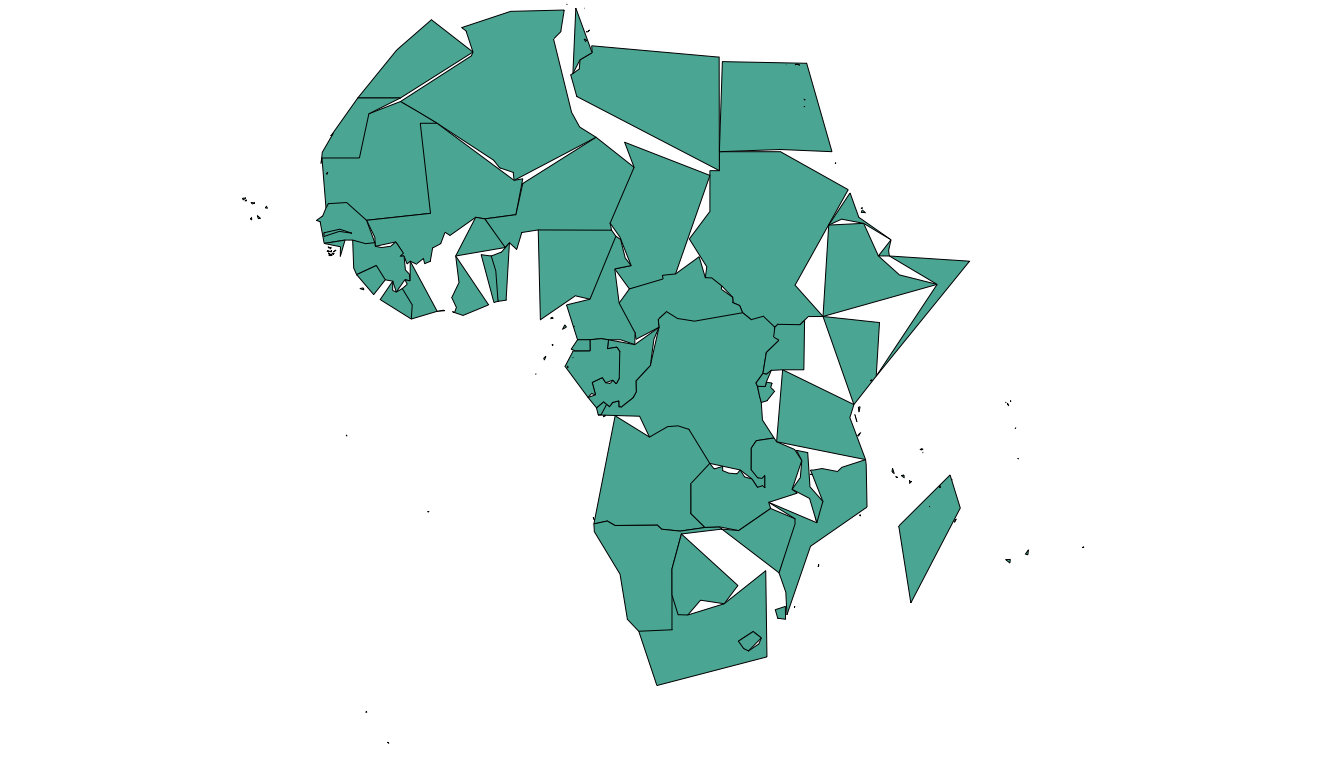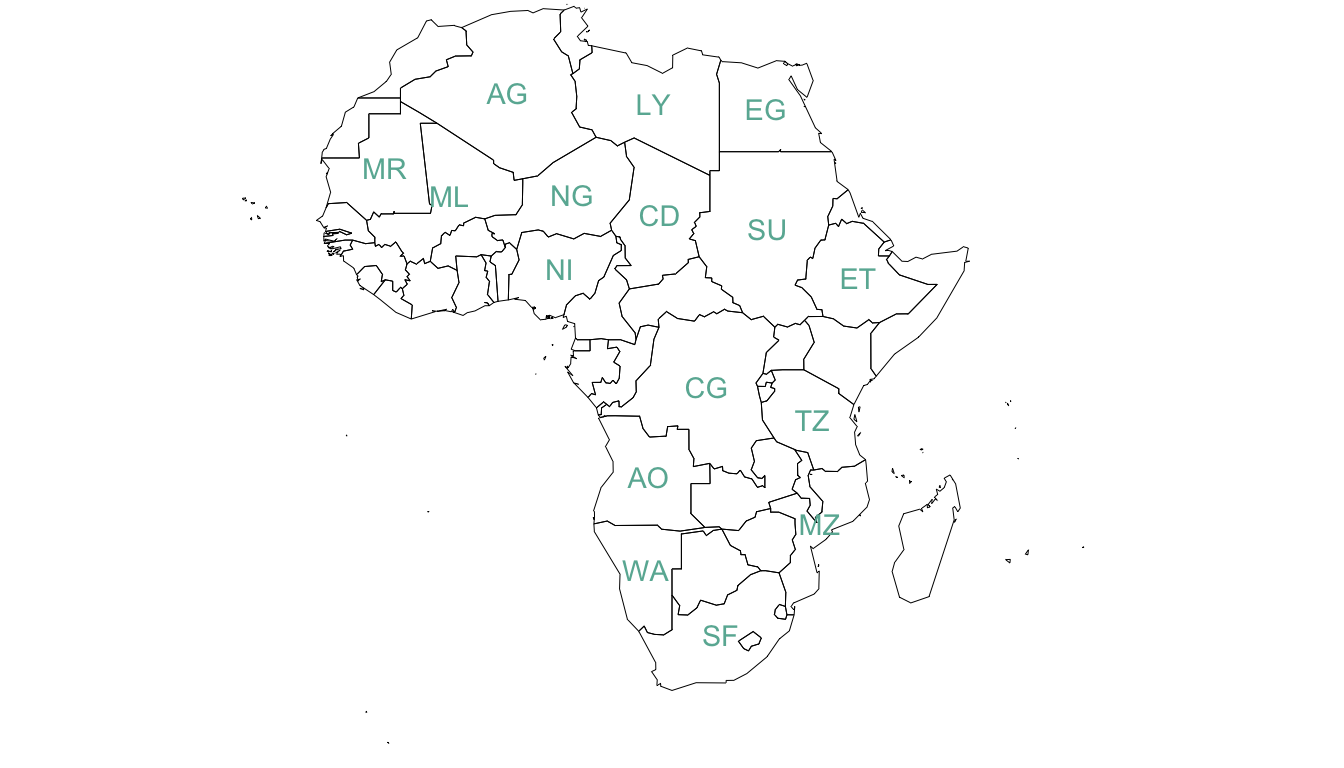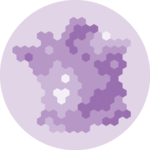Get a geospatial object
The region boundaries required to make maps are usually stored in geospatial objects. Those objects can come from shapefiles, geojson files or provided in a R package. See the map section for possibilities.
Let’s get a geospatial object from a shape file available here. This step is extensively described in this post in case you’re not familiar with it.
# Download the shapefile. (note that I store it in a folder called DATA. You have to change that if needed.)
download.file("http://thematicmapping.org/downloads/TM_WORLD_BORDERS_SIMPL-0.3.zip" , destfile="DATA/world_shape_file.zip")
# You now have it in your current working directory, have a look!
# Unzip this file. You can do it with R (as below), or clicking on the object you downloaded.
system("unzip DATA/world_shape_file.zip")
# -- > You now have 4 files. One of these files is a .shp file! (TM_WORLD_BORDERS_SIMPL-0.3.shp)And let’s load it in R
# Read this shape file with the rgdal library.
library(rgdal)
my_spdf <- readOGR(
dsn= paste0(getwd(),"/DATA/world_shape_file/") ,
layer="TM_WORLD_BORDERS_SIMPL-0.3",
verbose=FALSE
)
# -- > Now you have a Spdf object (spatial polygon data frame). You can start doing maps!Select a region
You can filter the geospatial object to plot only a subset of the regions. The following code keeps only Africa and plot it.

# Keep only data concerning Africa
africa <- my_spdf[my_spdf@data$REGION==2 , ]
# Plot africa
par(mar=c(0,0,0,0))
plot(africa , xlim=c(-20,60) , ylim=c(-40,35), col="steelblue", lwd=0.5 )Simplify the geospatial object
It’s a common task to simplify the geospatial object. Basically, it decreases the border precision which results in a lighter object that will be plotted faster.
The rgeos package offers the gSimplify() function to makes the simplification. Play with the tol argument to control simplification rate.

# Simplification with rgeos
library("rgeos")
africaSimple <- gSimplify(africa, tol = 4, topologyPreserve = TRUE)
# Plot it
par(mar=c(0,0,0,0))
plot(africaSimple , xlim=c(-20,60) , ylim=c(-40,35), col="#59b2a3", lwd=0.5 )Compute region centroid
Another common task is to compute the centroid of each region to add labels. This is doable using the gCentroid() function of the rgeos package.

# Load the rgeos library
library(rgeos)
# The gCentroid function computes the centroid of each region:
# gCentroid(africa, byid=TRUE)
# select big countries only
africaBig <- africa[which(africa@data$AREA>75000), ]
# Small manipulation to put it in a dataframe:
centers <- cbind.data.frame(data.frame(gCentroid(africaBig, byid=TRUE), id=africaBig@data$FIPS))
# Show it on the map?
par(mar=c(0,0,0,0))
plot(africa , xlim=c(-20,60) , ylim=c(-40,35), lwd=0.5 )
text(centers$x, centers$y, centers$id, cex=.9, col="#69b3a2")




